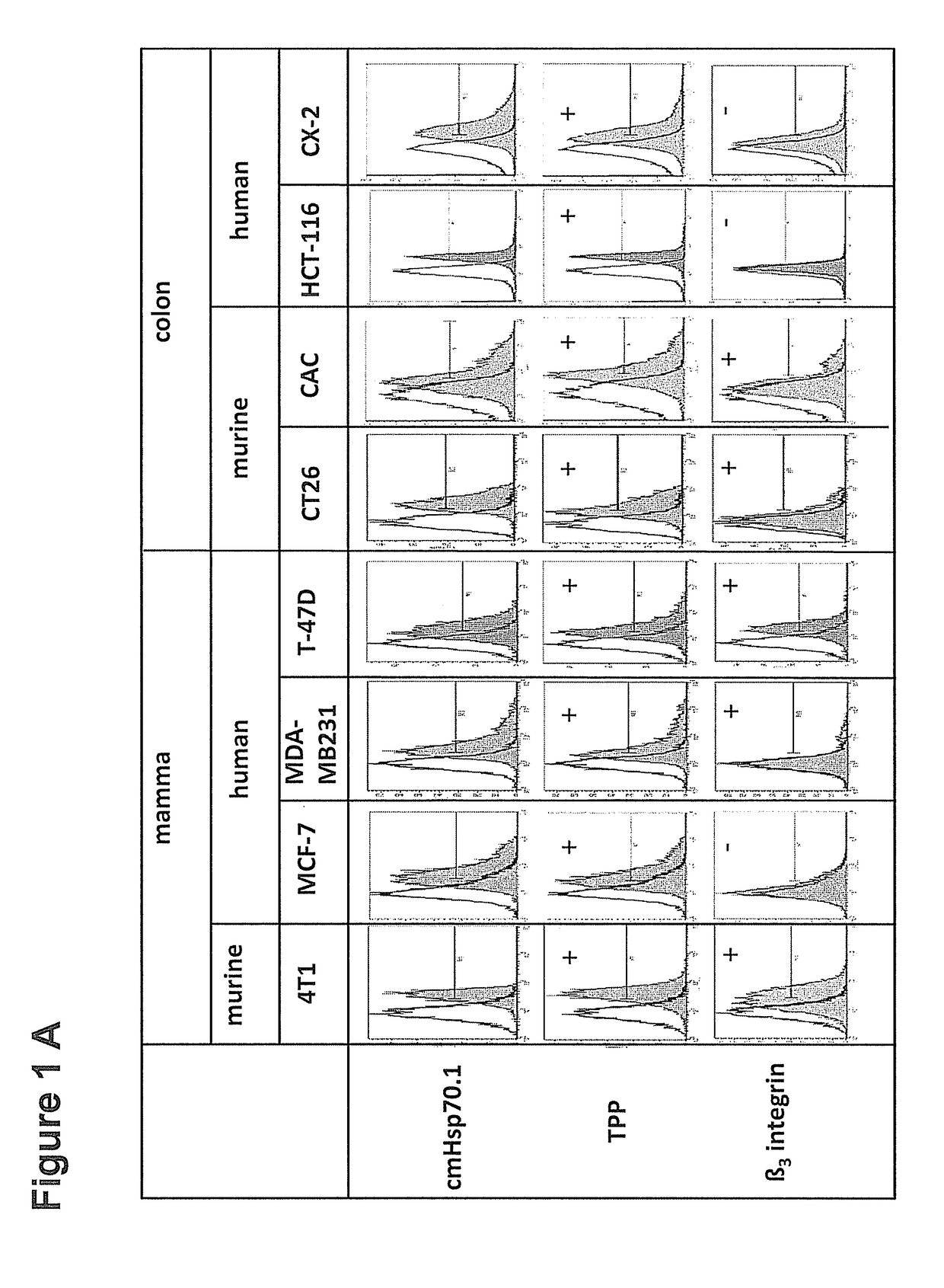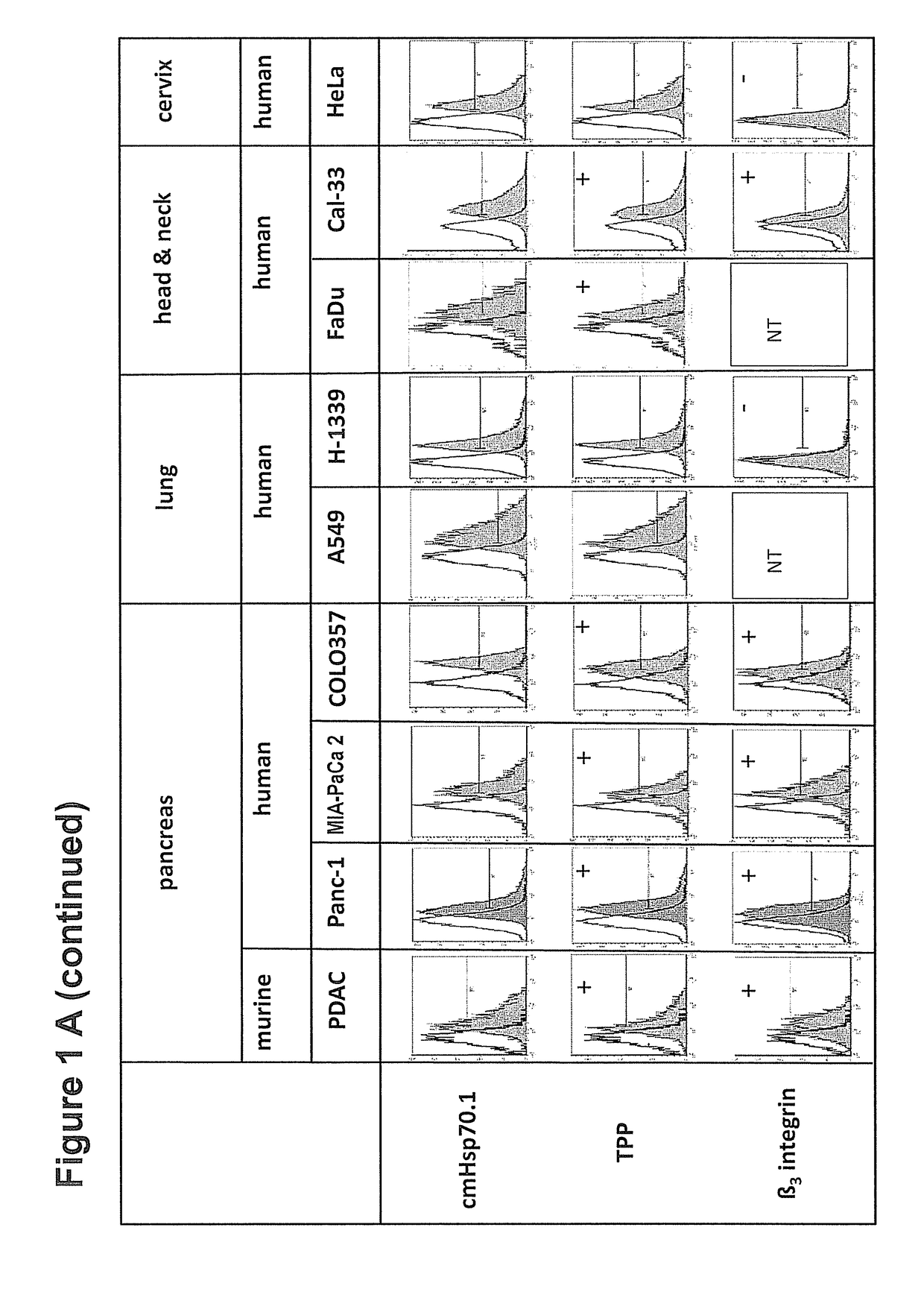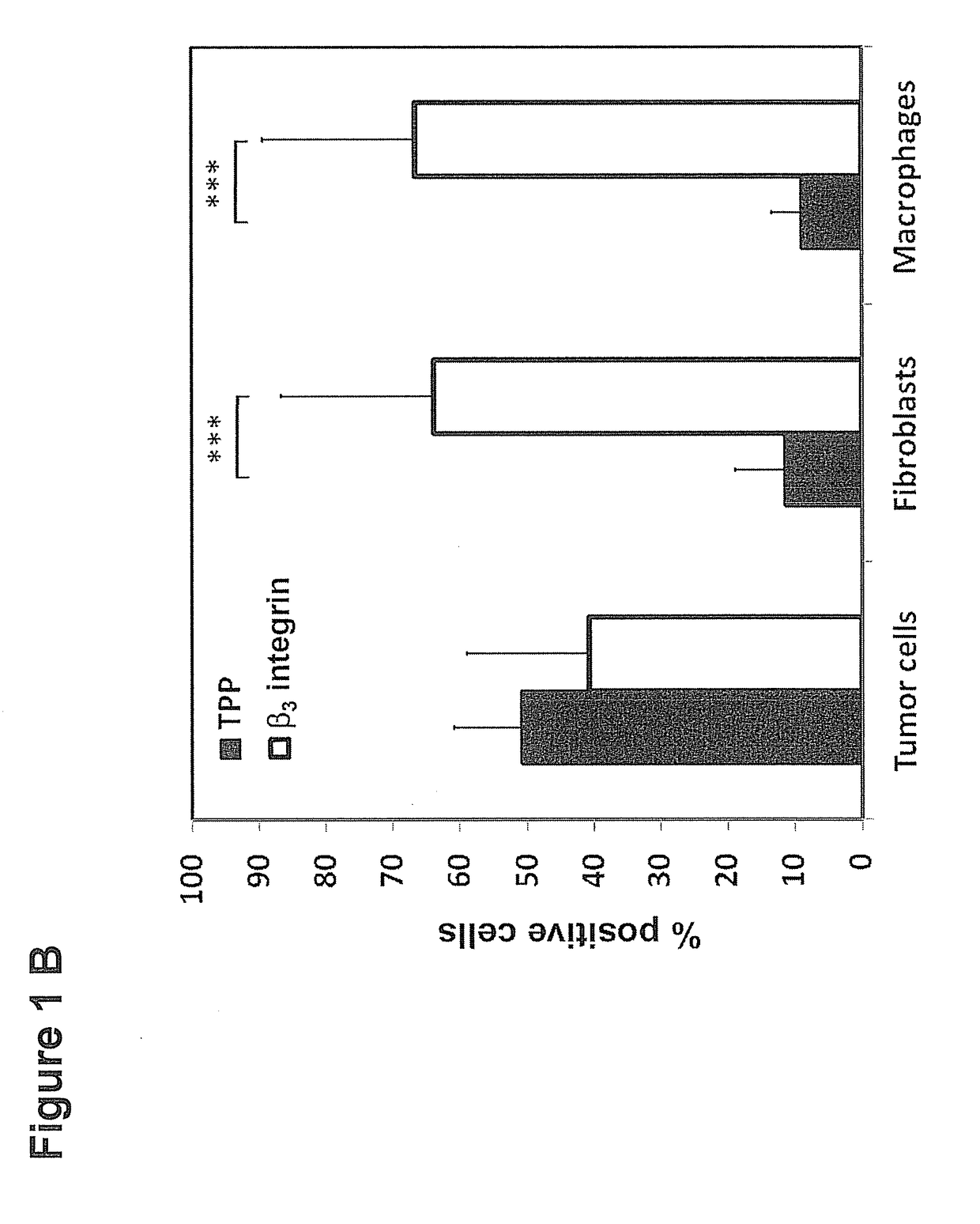Peptide-Based Compounds and Their Uses for Tumor Imaging and Targeting
a technology of peptides and compounds, applied in the direction of instruments, material analysis, biological material analysis, etc., can solve the problems of high side effects, time-consuming and cost-intensive production and purification of therapeutic antibodies, drug resistance and other issues associated with biodistribution and drug clearance, etc., to achieve strong tumor-specific signal intensity, rapid washout, and high tumor-to-background contrast
- Summary
- Abstract
- Description
- Claims
- Application Information
AI Technical Summary
Benefits of technology
Problems solved by technology
Method used
Image
Examples
examples
1. Material and Methods
1.1 Animals
[0200]BALB / c, FvB and SHO-PrkdcscidHrHr (SHO) mice were obtained from an animal breeding colony (Charles River, Wilmington, Mass., USA and Harlan Winkelmann, Borchen, Germany) and were maintained in pathogen-free, individually ventilated cages (Tecniplast, Hohenpeissenberg, Germany). All animal experiments were approved by the District Government of Upper Bavaria and performed in accordance with the German Animal Welfare and Ethical Guidelines of the Klinikum rechts der Isar, TUM, Munich, Germany. Tumors were examined after the animals were sacrificed by cervical dislocation.
1.2 Syngeneic Tumor Models.
[0201]CT26 (CT26.WT; ATCC CRL-2638) mouse colon adenocarcinoma cells (5×105) or 4T1 (ATCC CRL-2539) mouse mammary carcinoma cells (2.5×105) (American Type Culture Collection, ATCC, authentication not applicable for mouse cell lines), both derived from BALB / c mouse strains, were harvested in the exponential growth phase and injected subcutaneously (s.c....
PUM
| Property | Measurement | Unit |
|---|---|---|
| time | aaaaa | aaaaa |
| concentrations | aaaaa | aaaaa |
| concentrations | aaaaa | aaaaa |
Abstract
Description
Claims
Application Information
 Login to View More
Login to View More - R&D
- Intellectual Property
- Life Sciences
- Materials
- Tech Scout
- Unparalleled Data Quality
- Higher Quality Content
- 60% Fewer Hallucinations
Browse by: Latest US Patents, China's latest patents, Technical Efficacy Thesaurus, Application Domain, Technology Topic, Popular Technical Reports.
© 2025 PatSnap. All rights reserved.Legal|Privacy policy|Modern Slavery Act Transparency Statement|Sitemap|About US| Contact US: help@patsnap.com



